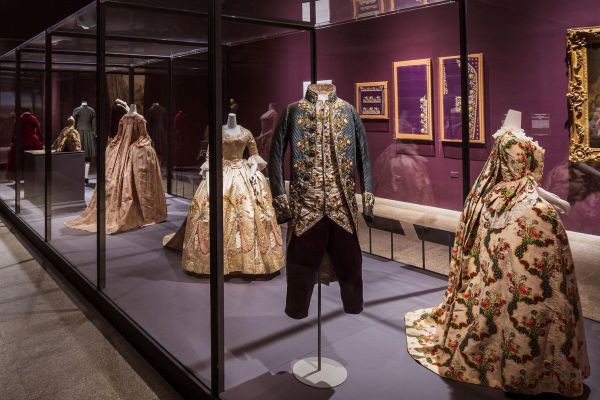Fashion, an ever-evolving form of self-expression, has undergone transformative changes across different eras, each reflecting the cultural, social, and political contexts of its time. From the extravagant attire of ancient civilizations to the rebellious styles of the modern era, fashion has not only served as a means of personal identity but has also acted as a reflection of society's values and aspirations. In this article, we embark on a fascinating journey through history, exploring the prominent fashion trends that have defined each era.
Ancient Civilizations (3000 BCE - 500 CE)
In ancient civilizations like Egypt, Mesopotamia, Greece, and Rome, clothing was often symbolic of one's social status and power. Elaborate drapery, linen garments, and vibrant colors dominated the wardrobes of the wealthy elite, while simple tunics and loincloths were typical for the working class. Intricate jewelry, such as gold necklaces and gemstone-encrusted accessories, were also popular during this era, highlighting the importance of adornment in ancient cultures.
Middle Ages (500 - 1500 CE)
The Middle Ages saw the rise of feudalism, and fashion became a tool for distinguishing the nobility from the commoners. The medieval fashion was characterized by voluminous robes, fur-lined garments, and pointed shoes, inspired by the opulence of the Byzantine Empire and the Far East. Colors played a significant role, with deep, rich hues representing prestige and royalty. Moreover, religious garments, such as cassocks and habits, reflected the influence of the Church on fashion.
Renaissance (1400 - 1600 CE)
The Renaissance era marked a period of artistic and intellectual rebirth, and fashion became an avenue for creative expression. In Italy, fashion was heavily influenced by the works of Renaissance artists like Leonardo da Vinci and Michelangelo. This era saw the emergence of elaborate gowns with intricate embroidery, corsets to accentuate the female form, and codpieces to highlight masculinity. The use of luxurious fabrics, like silk and velvet, further symbolized wealth and prosperity.
Baroque and Rococo (1600 - 1800 CE)
The Baroque and Rococo periods were characterized by extravagance and grandeur. In the Baroque era, dramatic and heavily ornamented clothing was popular, featuring elaborate lace, brocade, and ribbons. However, the Rococo period brought a shift towards lighter, pastel colors and softer silhouettes, inspired by nature. Wigs and powdered hair became fashionable, signifying status and sophistication.
Victorian Era (1837 - 1901)
The Victorian era was marked by modesty and strict social norms. Women's fashion featured voluminous skirts, corsets, and high-collared blouses, emphasizing a narrow waist and a demure appearance. Men's fashion, on the other hand, included tailored suits, waistcoats, and top hats, reflecting a more formal and refined aesthetic. The Industrial Revolution also brought mass-produced clothing, making fashion more accessible to the middle class.
Roaring Twenties (1920s)
The 1920s witnessed a dramatic shift in fashion, symbolizing the liberation of women and the spirit of rebellion. The flapper style emerged, characterized by short skirts, dropped waists, and loose-fitting dresses, challenging traditional gender roles. Art Deco influences led to geometric patterns and beaded embellishments, exuding the glamour of the Jazz Age.
Post-War Fashion (1940s - 1950s)
The post-war era brought a return to elegance and femininity. The 1940s saw utility clothing due to wartime rationing, with practical dresses and military-inspired attire. However, the 1950s embraced a more glamorous and polished look, with full skirts, cinched waists, and refined suits epitomizing the "New Look" introduced by Christian Dior.
Swinging Sixties (1960s)
The 1960s brought a burst of creativity and experimentation, influenced by the counterculture movements. Miniskirts, bold patterns, and bright colors defined the era, reflecting a sense of liberation and youthfulness. The hippie movement also brought bohemian fashion with flowing fabrics, fringe, and tie-dye.
Conclusion
Fashion has undergone a fascinating evolution from one era to another, reflecting the dynamic nature of society and the human desire for self-expression. Each era's unique styles have left an indelible mark on history, shaping not only the way people dress but also how they perceive and express themselves. As we move forward, it's essential to appreciate and draw inspiration from the rich tapestry of fashion's past, as it continues to influence the trends of the present and the future.









